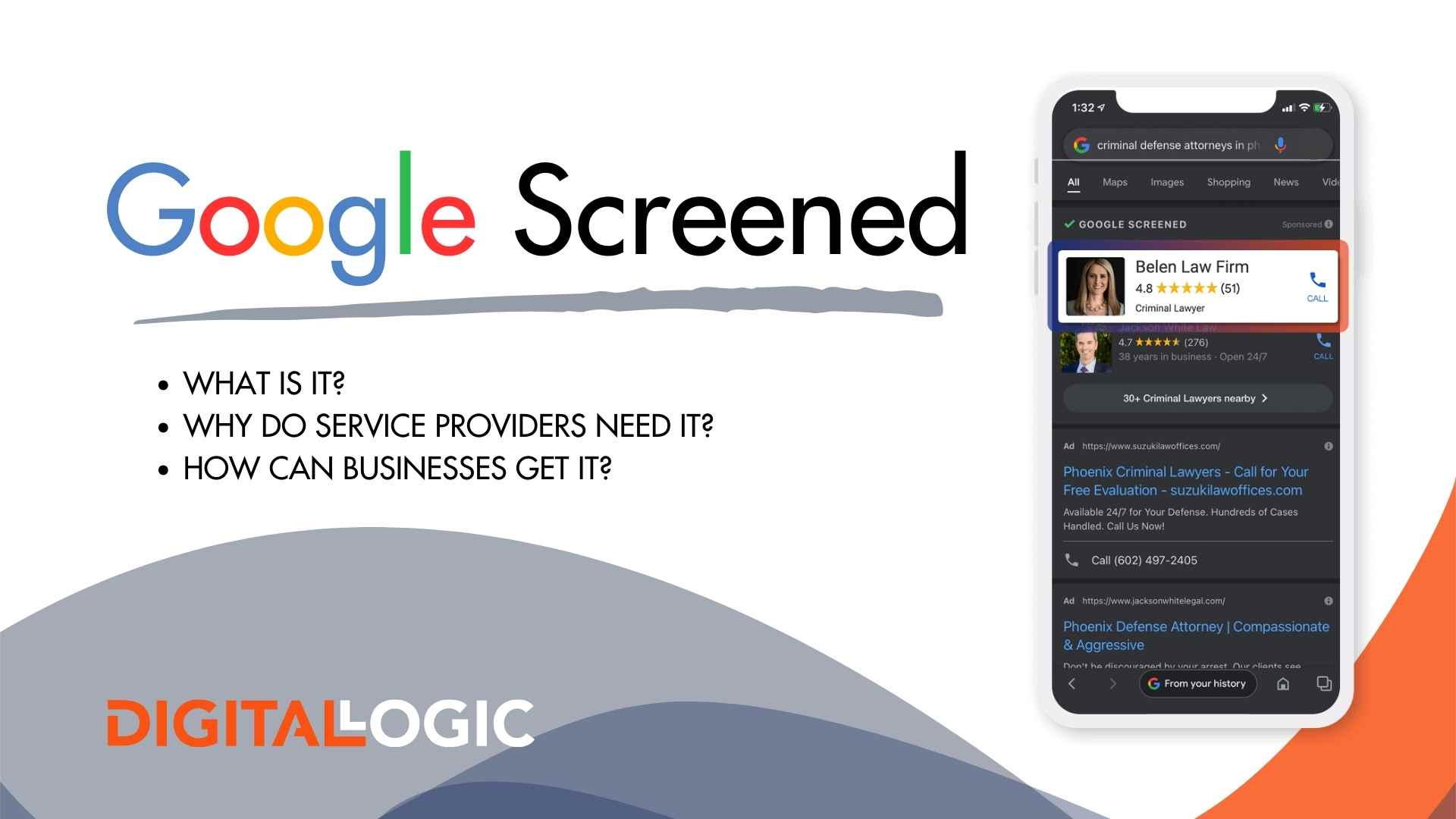If you’ve ever used Google search, then you’ve likely seen the feature, “People Also Search For” at the bottom of the screen. Google released this feature in 2018. The goal was to help searchers with follow-up search options in the off chance that they didn’t find what they were looking for in their initial search.
Why Did Google Introduce “People Also Search For”?
Most of Google’s users believe that the platform is simply a search engine. And, while Google is undoubtedly the most incredible search engine to date, in reality, it’s first an advertising mechanism that uses various search features to attract a larger audience and help its advertisers generate more sales.
Since this is the end goal, Google’s top priority is maintaining its position as the top search engine. In order to maintain its status, it must show the most relevant and accurate information from the best websites in the search results. And, if you pay attention, you’ll notice that Google is constantly testing new features to improve its search engine results pages.
“People Also Search For (PASF)” is one of those features.
What is “People Also Search For” on Google Search?”
When searchers look for specific keywords on Google, the search engine shows the most relevant websites for those specific search queries. When a searcher clicks on one of the websites on the search engine results page but then bounces back to the search results, then Google assumes that the searcher didn’t find what they were looking for initially.
This is when Google shows the “People Also Search For” snippet directly under the search result that the user previously clicked on. The PASF box shows the searcher other relevant keywords related to their search query.
So, for example, when we searched for “Digital Media,” this is the result.

As you can see, this is the standard Google search format. But, once we clicked on the link, browsed the page for a few seconds, and clicked back to the search results page, this is what we see.
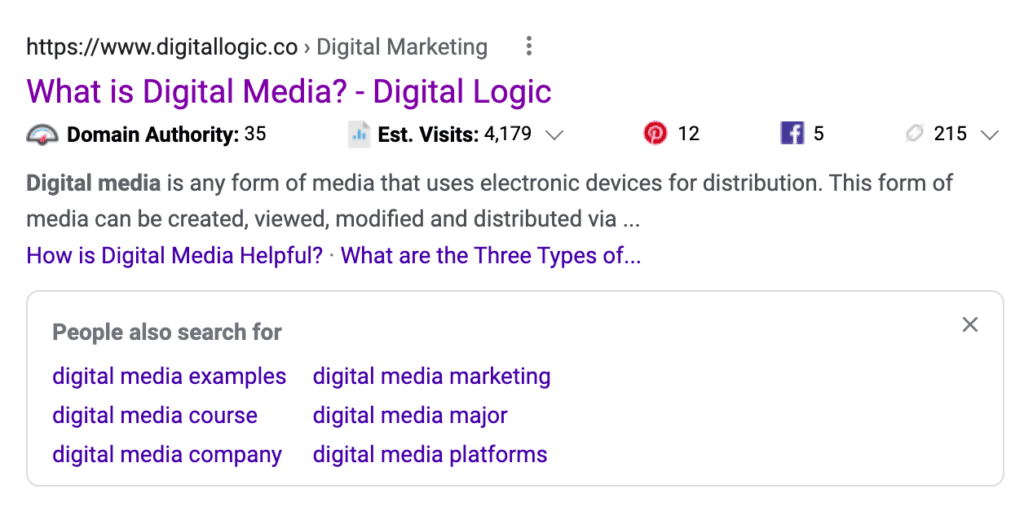
Now, we see the “People Also Search For” section.
So, again, the PASF keywords are triggered when Google believes that the searcher didn’t find what they needed from the initial search result. This enhances the user’s experience on Google search, but that’s not all that People Also Search For does.
PASF keywords are a great digital marketing tool for SEO keyword research.
If you don’t have access to high-tech, expensive keyword research tools, then the “People Also Search For” feature can help you find popular long-tail keywords related to the target keywords you’re trying to rank a page for.
People Also Search For vs Related Searches
People Also Search For keywords are very close to the “related searches” sections at the bottom of Google’s search results page.
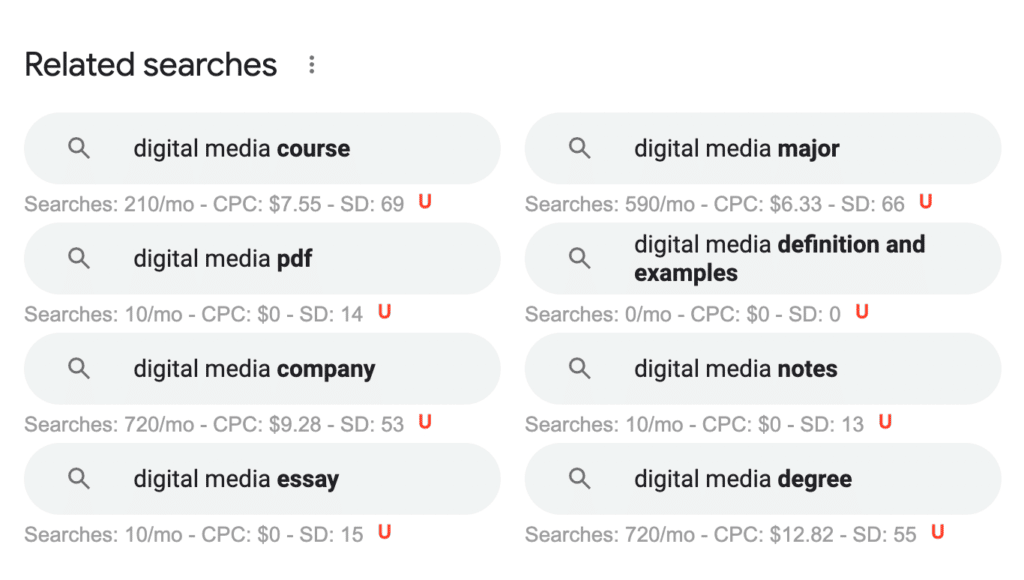
So, what is the difference, if any, between the PASF keywords and the related searches?
The biggest variation between the PASF keywords and the related searches section is the positioning of the two on the search results page. The PASF box is in a better position and therefore, more likely to be clicked on than the related searches section, located at the bottom of the page.
Also, the PASF box and related searches boxes show a few different keyword suggestions, and the ASF section has less keyword suggestions than the People Also Search For section.
People Also Search For vs People Also Ask
So, the “People Also Search For” section includes relevant keywords that Google knows others typically search for after searching for the same keywords initially.
In the “People Also Ask (PAA)” section, Google’s search results show related questions associated with the search query. This is also based on Google’s monthly search volume data.
So, for example, when we search for “digital media,” these are the questions that searchers typically ask about the specific keyword.
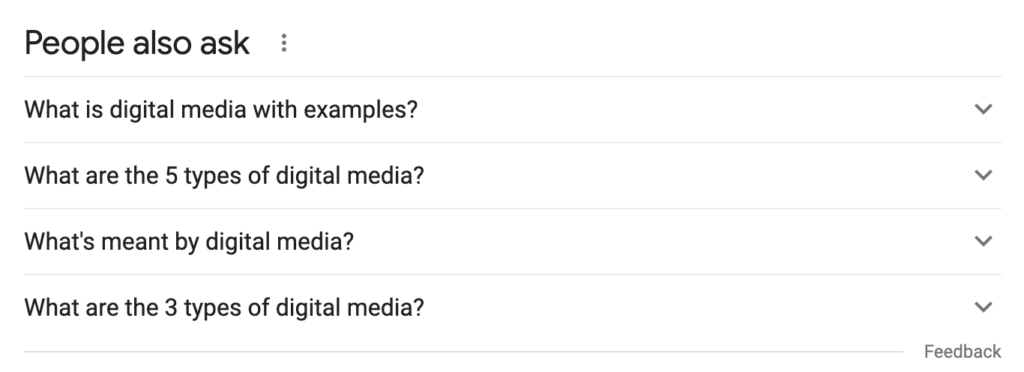
So, unlike the PASF keywords, the PAA listings aren’t really considered keywords but rather actual questions.
The “People Also Ask” section is an excellent place to find content ideas for blog posts, as well.
BONUS TIP: Make sure you add and answer these same questions using FAQ schema. There are great schema tools that help you add this easily!
How Can “People Also Search For” Help Your Search Engine Optimization Strategy?
If you’re trying to learn how to leverage search engines to help your website rank higher on the search results pages, then PASF keywords can absolutely help as a keyword research tool.
These keywords come directly from Google Search’s database.
People Also Search For keywords are the related topics that your target audience uses frequently.
Looking at these related queries can help you better understand your target audience’s interests.
You can find PASF keywords for almost all search queries, but they aren’t available for all. So, if you’re seriously interested in using these keyword ideas to build out your content, we suggest downloading a free Google Chrome extension called Keywords Everywhere. It shows you the related search terms for every keyword.
How to Use People Also Search For to Get More Website Traffic
We’ve gone over the importance of dynamic search features and why PASF keywords are important to your search engine optimization strategy, but how do you actually use these related keywords to rank better on a Google search page?
Use PASF Keywords for Keyword Research
As we all know, Google is the preferred search engine for most people. Google analyzes many data points, such as monthly search volume data, rank number, user clicks, etc., to ensure it’s putting out the best possible information for any given keyword based on user intent.
So, when you find PASF keywords directly from Google’s search result page records, this means that your target searcher’s query led them to also look at the related terms you’re seeing. This information is so valuable!
Ranking for the related queries can help you generate SEO website traffic that you wouldn’t have generated had you not used the alternate search terms.
- First, you’ll want to come up with your target keyword, or the keyword that you’re trying to rank a web page for. Search for this keyword and write down all of the PASF keywords associated with this main query. Then, search for each of those different keywords and jot down all of those PASF keywords. If your topic doesn’t cover a ton of ground, then the keywords will be pretty similar. But, using this method for research can often help you find additional keyword ideas that you wouldn’t have thought about before.
- If you want to take your keyword research a step further, you can add these keywords to a research tool, like Ahrefs, to weigh data points like total search volume and ranking difficulty to see if these search terms are worth trying to rank for.
Use PASF Keywords for Content Creation
If you’re creating SEO content to help with your SEO efforts, then it won’t be long before you start running out of content ideas.
The process works similarly to that previous tactic.
First, you’ll search for your target topic on Google’s search engine and write down the PASF keywords, just like we previously explained. From here, you’ll search for each keyword and analyze the top ranking websites for each of these keywords.
How does this help, though?

Simple. Google considers all of those high ranking sites to be the topical authority on the specific search query. Those sites are offering something to the end user that other websites simply aren’t. The key is to figure out which of those websites’ related pages apply to your content, as well.
Doing this for multiple keywords pertaining to the same general concept will make your website increasingly dynamic over time. You’re addressing your target keyword from every angle possible.
Google will reward your website for being so thorough by increasing your website’s authority and ranking it higher on the search results pages.
Use People Also Ask as FAQs
We hinted at this earlier in our bonus tip, but let’s dive a little deeper into what this means.
We’ve found that adding a quick FAQ section to the end of your articles is a great way to sum up your key points and is an easy way to engage with your audience.
Let’s look at that “People Also Ask” section again.

The PAA keywords are the best for question and answer format, since these rich snippets are already worded in the exact way that your target audience is searching for them.

When you search for PASF keywords, you’ll notice that oftentimes, these keywords are already in a great position to be turned into questions. (This assumes that they aren’t already featured on the “People Also Ask” section.)
So, for this example, since we’ve already covered “What is digital media with examples?” from the PAA featured snippet, we should skip the keyword, “digital media examples” for now.
We’ll also want to consider the user’s intent when we’re looking at these featured snippets.
Since our company, Digital Logic, is a marketing agency and not super interested in providing coursework or course help, we need to also skip the next keyword, “digital media course”. (We will explain why later.)
But, the next keyword could be super beneficial to help our marketing website rank better, right?
When we first speak with a new client, we always say “The way YOU search for you is not the way YOUR AUDIENCE searches for you.” And, here is a shining example of that– We never refer to ourselves as a digital media company. We’re a digital marketing company who provides great examples of digital media, but clearly, our audience prefers this terminology.
So, once again, Google continues to teach the teacher.
We would phrase this specific keyword in the question format like this: “How Do I Find a Great Digital Media Company?” and cue the self promotion!
Use PASF Keywords to Improve On-Page SEO
If you’re needing to boost your website’s on-page SEO, then simply include the People Also Search For keywords you found in your pages, locating them strategically.
We’d suggest including these keywords in your headings, as alt texts on your images, and in your meta titles and meta descriptions.
Finding People Also Search For Topics That Will Rank Well on the Search Engine Results Pages
So, like many things in life, finding the right keywords isn’t necessarily the difficult part. Instead, it’s determining how to implement them into your search engine optimization strategy.
This hinges on your ability to find valuable long-tail keywords that you can actually rank for.
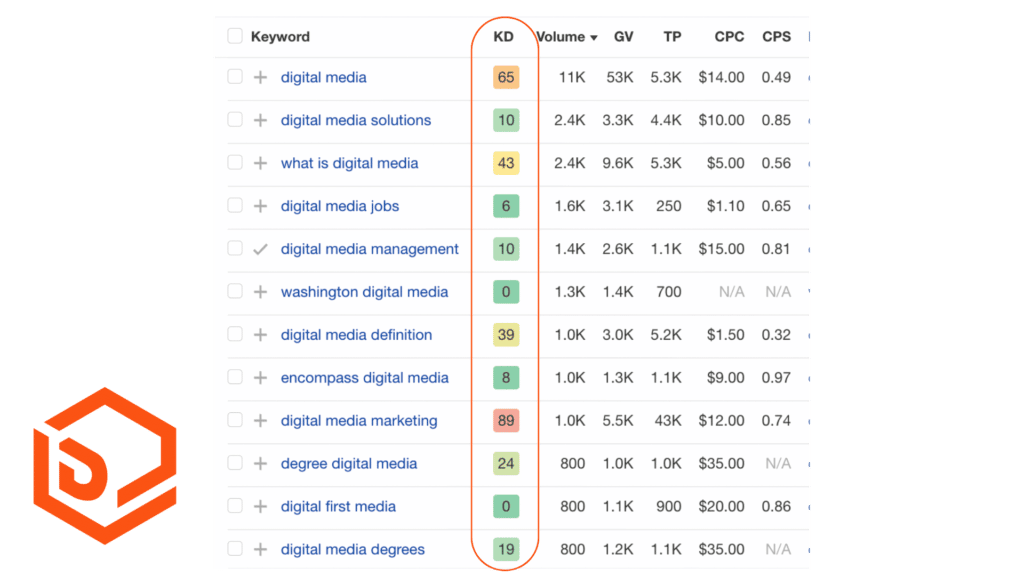
And, here’s the thing. When we talk about SEO strategy, it’s so hard for most of us SEO professionals to provide a brief answer. Most of us are aware, and we genuinely do try to be straightforward with this stuff. But, the truth of the matter is that SEO encompasses a huge variety of ranking factors. We don’t want to make anyone feel as if we don’t know what we’re doing, ourselves. We also don’t want to overcomplicate things to the point where our readers are too discouraged to try out these methods.
So, for the sake of time (and our fingers), we’ll only address the main points here.
The ranking factors that matter for this tactic include:
- search intent
- quality content
- internal links and backlinks
Let’s explain these, why they’re important, and how they’re able to help us create content that ranks well on Google.
Search Intent
Search intent is important, not only for ranking well, but also for time management.
Remember our example earlier, how we skipped over the keyword, “digital media course” because it didn’t directly relate to us? Let’s look at that a little bit closer.
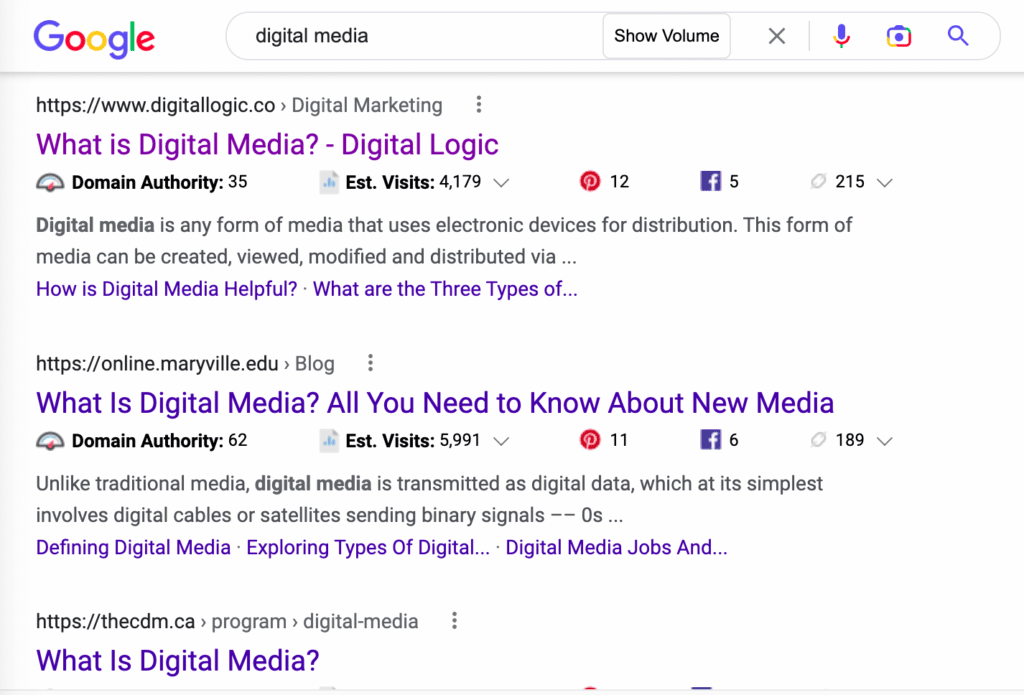
When we search for “digital media,” we see that the first few search results are titled, “What is Digital Media?”
This tells us that Google prefers articles that address what digital media is. Using monthly search volume data and a host of other variables, Google has determined that this addresses the user’s intent when they use this specific search query.
Search intent is important. This is a critical step that you don’t want to skip.
So, let’s go back to the “digital media course” example. Now, we could certainly write an additional post addressing this keyword. We would just title the page “Digital Media Course: How to Rank Your Website on Google,” or something similar.
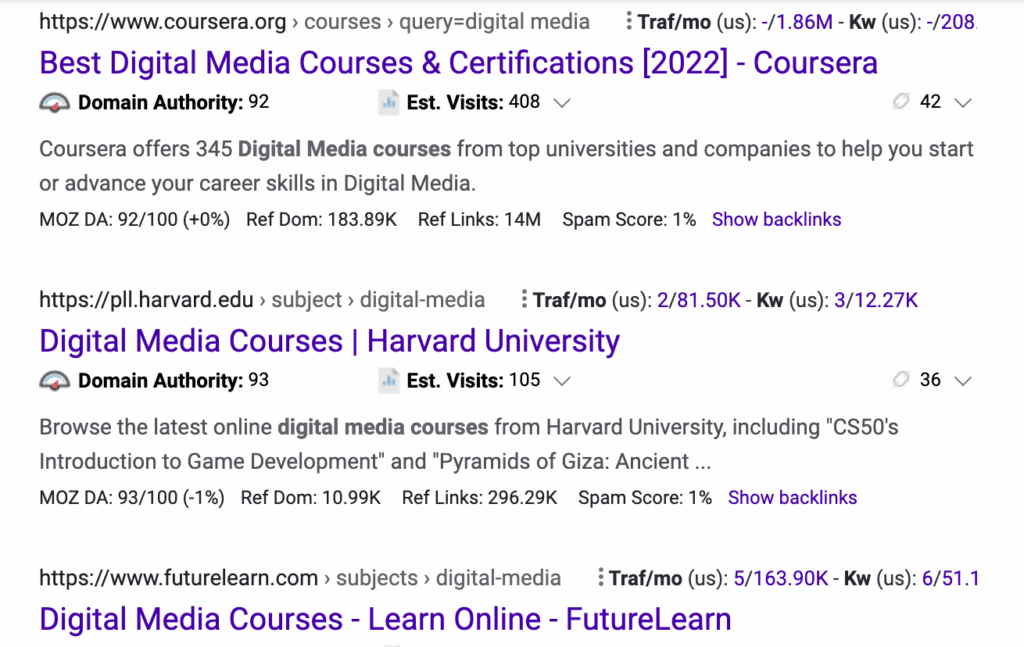
However, when we search for this specific keyword on Google, we see that Google prefers to rank actual, legitimate college-style courses.
So, while we could write about digital media courses, the likelihood that we would rank well on Google is slim, since it doesn’t address the majority of searcher’s intent.
Quality Content
Once you’ve come up with a keyword idea, based on the People Also Search For terms in the organic search results, and you understand the user’s search intent, then it’s time to create a content outline.
You can use a variety of SEO tools to help you create a quality content outline.
Once you’ve nailed down your outline and key points you’d like to address in your page or blog post, then it’s time to start writing the content. You want to make sure that your content actually addresses the questions you found in the “People Also Ask” section. If it doesn’t then your visitors will quickly leave your page, and Google won’t rank your page as well.
Internal Links and Backlinks
Once you’ve written your blog or page and have posted it to your website, then you will want to link it internally. This just means that you will want to go to your other relevant pages and add hyperlinks to your new page or post using appropriate anchor text.

Internal linking helps you create a knowledge graph and helps Google’s search crawlers understand that you have topical authority on your target keyword.
Internal Links are just like backlinks, only they’re coming from different pages on the same website instead of coming from other websites.
If you follow all of the steps we’ve provided, then in a few months, your page should rank pretty well on Google. And, if the page isn’t ranking well on the search engine results pages, then this means that you selected a keyword that’s too competitive to rank well without backlinks.
As we mentioned, backlinks are hyperlinks that come from other websites online. When another website links to your page, this tells Google that at least one other source believes that you are the topical authority. The more websites that link to your page, the higher your chances are of ranking well.
The more competitive the target keyword is, the more backlinks you’ll need to rank for it.
How are You Using “People Also Search For” to Help With Your Online Marketing?
People Also Search For (PASF) on its face, just seems like a quirky Google Search feature. But, if you take our advice, you can use this feature to improve your website’s performance for lower competition search terms.
For more competitive keywords, you’ll need to include more advanced techniques and potentially employ a more professional SEO strategy.
At Digital Logic, we offer monthly SEO packages for a range of marketing budgets, if you’re looking into outsourcing SEO service work. As a top SEO agency, we have helped our clients drastically increase their return on investments and profitability. If you’re wanting help from our professional SEO experts, look into our digital SEO services or call 318-678-5020.



